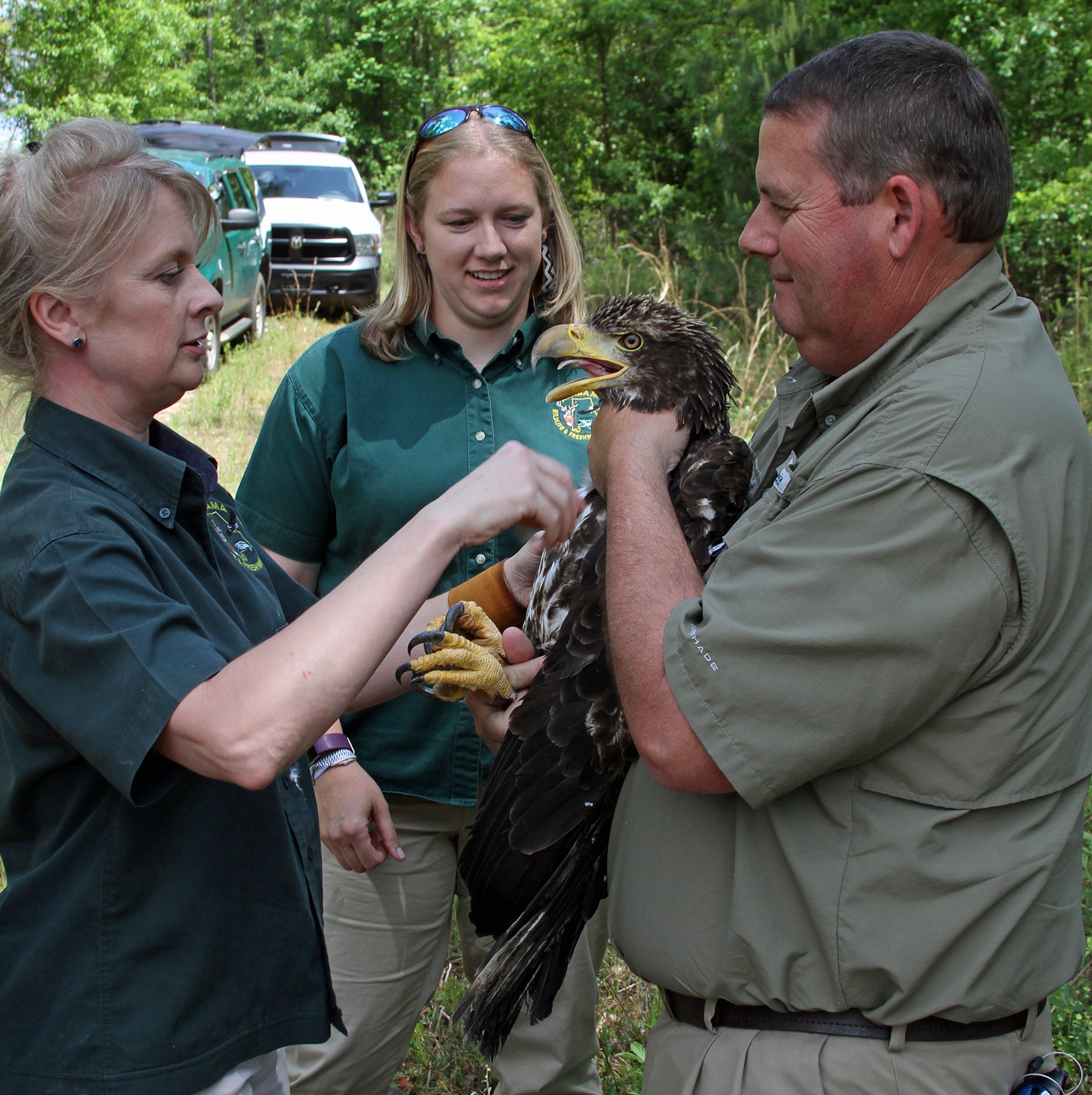By DAVID RAINER, Alabama Department of Conservation and Natural Resources
Far from what today’s crowd calls civilization, Conservation Commissioner Chris Blankenship gained a new appreciation for America’s symbol of greatness.
Blankenship had the honor to release a rehabilitated bald eagle into the wild at the Uchee Creek Special Opportunity Area (SOA) in rural Russell County.
“Holding the eagle, I could tell she was ready to go and get back into the wild and enjoy life again,” Blankenship said after launching the immature eagle into the air. “Seeing the length of those talons and feeling the strength of her legs, it was really a little bit surprising how strong that eagle was.
“The nongame wildlife work we do, including raptors and birds like this, is very important to the Department of Conservation and the community. People are fascinated with hawks, kestrels and raptors of all kinds, eagles particularly. For us to be able to work with Auburn University and other rehabbers around the state and see those birds come back from injuries and be released back into the wild, that is extremely rewarding for us at the Department of Conservation.”
The released bald eagle was rehabilitated at the Southeastern Raptor Center, a part of Auburn University’s College of Veterinary Medicine. The immature eagle was found in Lee County with a broken wing. Once at the Southeastern Raptor Center, X-rays revealed the bird had been shot. Multiple small shot were evident in the X-ray, and one piece of bird shot had broken the metacarpus in the bird’s left wing.
“The bird was picked up in 2016 near Smith’s Station,” said Carrie Threadgill, nongame biologist with the Alabama Wildlife and Freshwater Fisheries (WFF) Division. “Auburn had the eagle for more than 500 days to rehabilitate it. The eagle has passed its flight test and should be good to go.”
Marianne Hudson, who joined Wildlife and Freshwater Fisheries as Conservation Outreach Specialist after a stint at Auburn’s raptor center, said the rehabilitators follow a specific protocol to get the birds ready to be released.
“Since the eagle came in with a broken wing, first it goes through treatment for that injury,” Hudson said. “The wing was splinted. As it healed, it was allowed more and more exercise and rehabilitation. The Southeastern Raptor Center has large flight enclosures to allow natural movements. The flight enclosures also have turns in them so that the eagle can maneuver in different directions.
“Between now and the time it was first discovered in December of 2016, this eagle has built up enough strength, stamina and muscle mass to completely pass its flight evaluation.”
Hudson said Dr. Seth Oster, one of the veterinarians at Auburn, oversees the flight evaluation and determines when a bird can be released.
“Dr. Oster and his staff evaluated the eagle’s takeoff, landing, perching ability and maneuverability,” Hudson said. “Dr. Oster has deemed this eagle recovered well enough for release.”
Hudson said there is no fear that the eagles and other raptors that are rehabilitated will become too accustomed to humans.
“These eagles are not handled,” she said. “They are just as wild as they were the day they came in. The eagles are not tamed at all. They are afraid of people. It will be able to resume a normal eagle life.”








